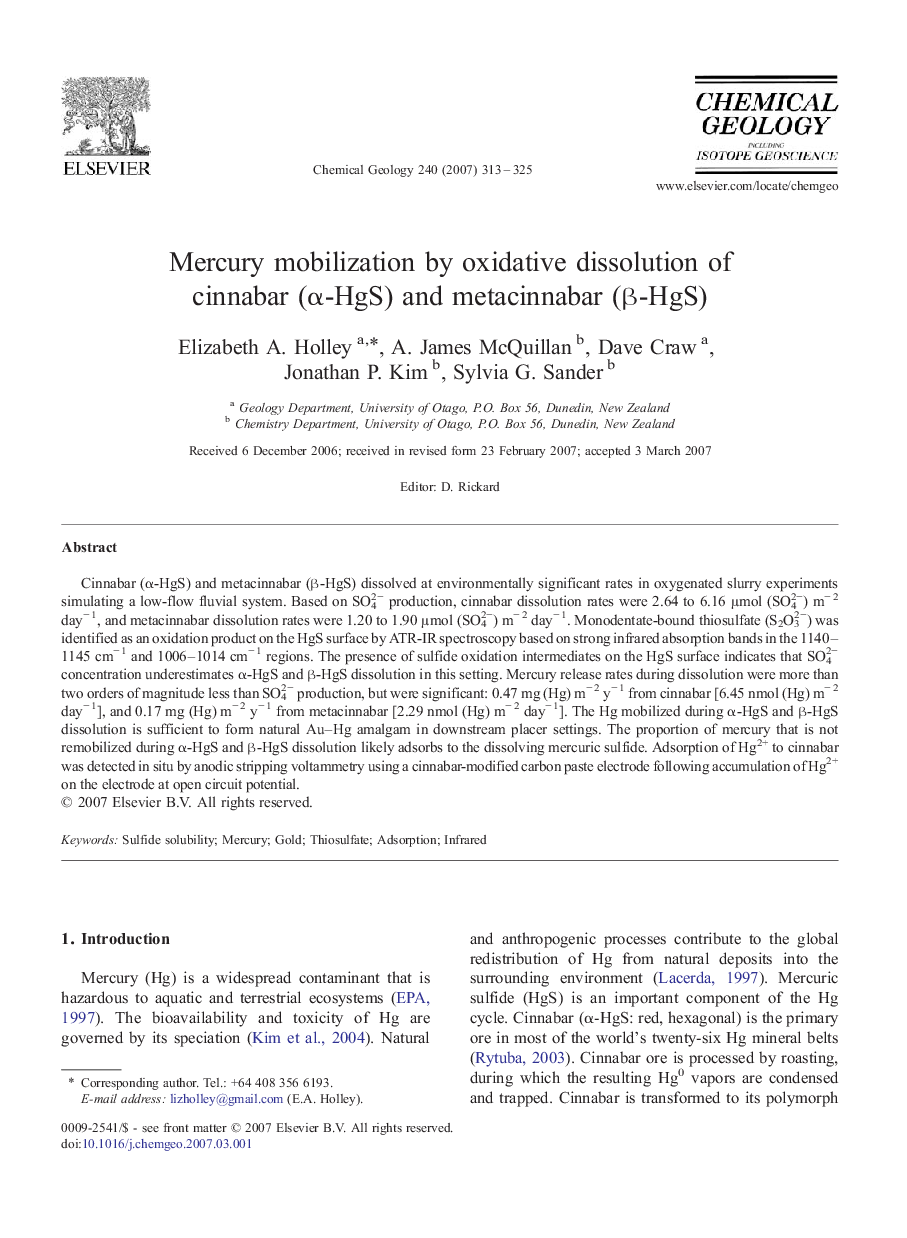| کد مقاله | کد نشریه | سال انتشار | مقاله انگلیسی | نسخه تمام متن |
|---|---|---|---|---|
| 4700888 | 1637749 | 2007 | 13 صفحه PDF | دانلود رایگان |

Cinnabar (α-HgS) and metacinnabar (β-HgS) dissolved at environmentally significant rates in oxygenated slurry experiments simulating a low-flow fluvial system. Based on SO42− production, cinnabar dissolution rates were 2.64 to 6.16 μmol (SO42−) m− 2 day− 1, and metacinnabar dissolution rates were 1.20 to 1.90 μmol (SO42−) m− 2 day− 1. Monodentate-bound thiosulfate (S2O32−) was identified as an oxidation product on the HgS surface by ATR-IR spectroscopy based on strong infrared absorption bands in the 1140–1145 cm− 1 and 1006–1014 cm− 1 regions. The presence of sulfide oxidation intermediates on the HgS surface indicates that SO42− concentration underestimates α-HgS and β-HgS dissolution in this setting. Mercury release rates during dissolution were more than two orders of magnitude less than SO42− production, but were significant: 0.47 mg (Hg) m− 2 y− 1 from cinnabar [6.45 nmol (Hg) m− 2 day− 1], and 0.17 mg (Hg) m− 2 y− 1 from metacinnabar [2.29 nmol (Hg) m− 2 day− 1]. The Hg mobilized during α-HgS and β-HgS dissolution is sufficient to form natural Au–Hg amalgam in downstream placer settings. The proportion of mercury that is not remobilized during α-HgS and β-HgS dissolution likely adsorbs to the dissolving mercuric sulfide. Adsorption of Hg2+ to cinnabar was detected in situ by anodic stripping voltammetry using a cinnabar-modified carbon paste electrode following accumulation of Hg2+ on the electrode at open circuit potential.
Journal: Chemical Geology - Volume 240, Issues 3–4, 15 June 2007, Pages 313–325